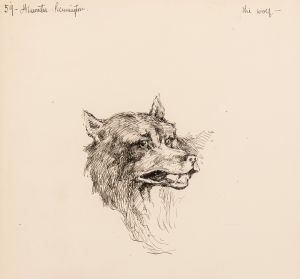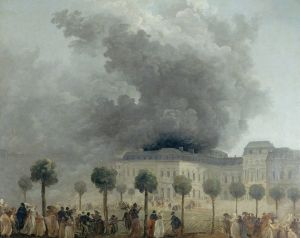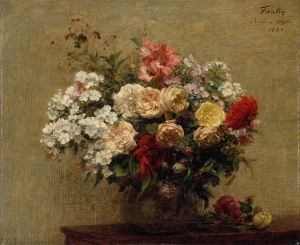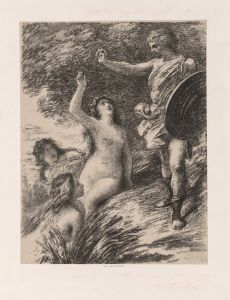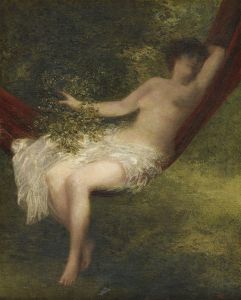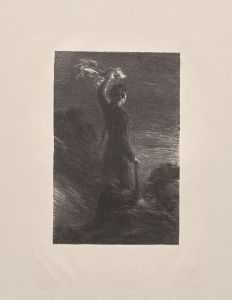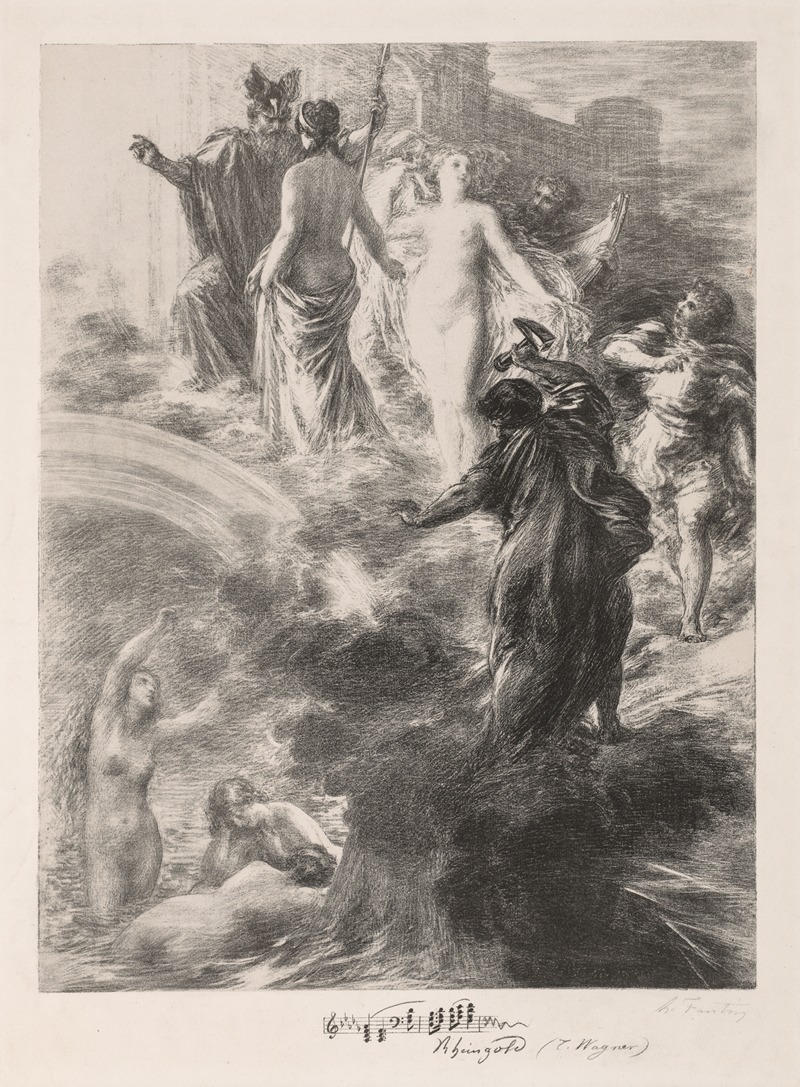
Finale of the Rhinegold
A hand-painted replica of Henri Fantin-Latour’s masterpiece Finale of the Rhinegold, meticulously crafted by professional artists to capture the true essence of the original. Each piece is created with museum-quality canvas and rare mineral pigments, carefully painted by experienced artists with delicate brushstrokes and rich, layered colors to perfectly recreate the texture of the original artwork. Unlike machine-printed reproductions, this hand-painted version brings the painting to life, infused with the artist’s emotions and skill in every stroke. Whether for personal collection or home decoration, it instantly elevates the artistic atmosphere of any space.
Henri Fantin-Latour, a renowned French painter and lithographer, is celebrated for his exquisite still lifes and portraits, as well as his imaginative works inspired by music and literature. One of his notable works in the latter category is "Finale of the Rhinegold," which reflects his deep appreciation for the music of Richard Wagner, a composer who had a significant influence on Fantin-Latour's artistic vision.
"Finale of the Rhinegold" is part of a series of paintings and lithographs that Fantin-Latour created, inspired by Wagner's operas. Richard Wagner's "Das Rheingold" is the first of the four operas that constitute the epic cycle "Der Ring des Nibelungen." This cycle is a cornerstone of the operatic repertoire and is known for its complex narrative and rich musical tapestry. Fantin-Latour, captivated by Wagner's innovative compositions and dramatic themes, sought to translate the emotional and narrative depth of these operas into visual form.
Fantin-Latour's work often captures the ethereal and mystical qualities of Wagner's music. In "Finale of the Rhinegold," he endeavors to depict the climactic moments of the opera, where the gods ascend to Valhalla, their newly built fortress, amidst a backdrop of grandeur and foreboding. The painting is characterized by its dreamlike quality, a hallmark of Fantin-Latour's style when engaging with musical subjects. He employs a soft, almost otherworldly palette, which serves to evoke the transcendental nature of the scene.
The composition of "Finale of the Rhinegold" reflects Fantin-Latour's skill in balancing detailed figuration with atmospheric effects. His use of light and shadow, combined with a delicate application of color, creates a sense of movement and drama that mirrors the operatic source material. This ability to convey the essence of music through visual art is a testament to Fantin-Latour's unique talent and his deep connection to the musical world.
Fantin-Latour's fascination with Wagner was not merely a passing interest; it was a profound influence that permeated much of his work. He was part of a broader cultural movement in 19th-century France that embraced Wagner's music, which was seen as revolutionary and emblematic of new artistic possibilities. Fantin-Latour's paintings and lithographs serve as a visual counterpart to Wagner's compositions, offering viewers an opportunity to experience the operas in a new and evocative way.
"Finale of the Rhinegold" is a significant example of how Fantin-Latour's work bridges the gap between visual art and music. It demonstrates his ability to capture the spirit of Wagner's operas, not through literal representation, but through an interpretation that emphasizes mood, emotion, and the sublime. This painting, along with his other Wagner-inspired works, solidifies Fantin-Latour's reputation as an artist who could transcend the boundaries of his medium, creating a dialogue between the auditory and the visual.
In summary, Henri Fantin-Latour's "Finale of the Rhinegold" is a masterful interpretation of Wagner's operatic themes, showcasing the artist's ability to translate musical inspiration into a visual narrative. Through his delicate brushwork and atmospheric compositions, Fantin-Latour invites viewers to experience the grandeur and emotion of Wagner's music in a new dimension, highlighting the enduring connection between these two forms of artistic expression.





